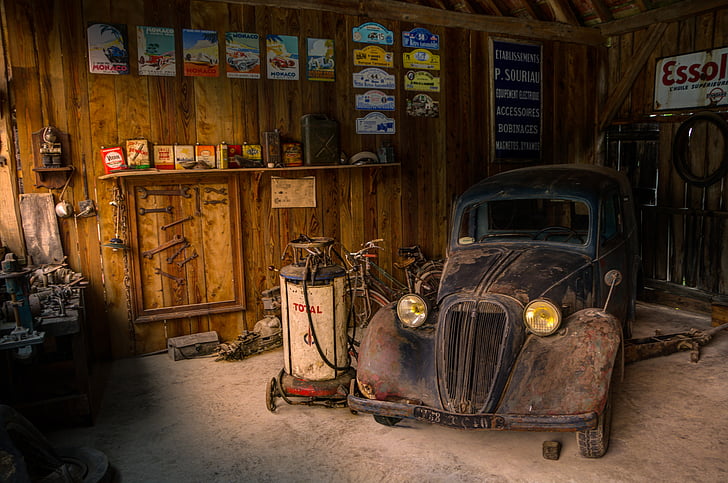Before wielding a lightsaber or hunting lost arks, Harrison Ford mastered a different kind of craft – but was carpentry truly his first calling?
Harrison Ford’s journey from a skilled carpenter to one of Hollywood’s most iconic actors is a testament to the power of craftsmanship, determination, and seizing unexpected opportunities. His story resonates particularly with those who appreciate the value of skilled trades and the paths they can lead to.
The Early Years: A Struggling Actor Turns to Carpentry
In the late 1960s, Harrison Ford found himself in a challenging position. Despite some minor acting roles, including a small part in ‘Dead Heat on a Merry-Go-Round’ (1966), he struggled to support his family through acting alone. Faced with financial pressures and a young family to provide for, Ford made a practical decision that would ultimately shape his career in unexpected ways. He turned to carpentry, a trade he taught himself out of necessity. By 1970, Ford was working full-time as a professional carpenter, taking on various projects throughout Los Angeles while still pursuing acting opportunities when possible.
Learning the Trade: Ford’s Carpentry Education
Ford’s approach to learning carpentry was entirely self-directed, showcasing the determination that would later characterise his acting career. He began by reading books about carpentry and woodworking, studying technical manuals, and practicing basic skills in his garage. Here’s how he developed his expertise:
- Started with fundamental woodworking techniques and basic tools
- Learned through trial and error, often practicing on small projects
- Studied architectural magazines and carpentry guides
- Developed expertise in custom cabinetry and furniture making
- Gradually took on more complex residential renovation projects
Notable Projects: From Workshop to Hollywood
As Ford’s reputation for quality craftsmanship grew, he began securing more prestigious projects, particularly within the entertainment industry. Some of his most notable carpentry work included:
- Building a recording studio for Brazilian musician Sergio Mendes
- Crafting custom furniture for acclaimed film director Francis Ford Coppola
- Constructing elaborate cabinet work for various Hollywood executives
- Creating a sun deck for actress Sally Kellerman
The Pivotal Moment: How Carpentry Led to Star Wars
In what has become Hollywood legend, Ford’s carpentry skills directly led to his breakthrough role as Han Solo. While working as a carpenter building cabinets at American Zoetrope studios, he caught the attention of George Lucas. The director had previously worked with Ford in ‘American Graffiti’ (1973) but initially wasn’t considering him for Star Wars. However, when Ford was hired to build a door in the offices where Lucas was conducting auditions for Star Wars, fate intervened. Lucas asked Ford to read lines with other actors during auditions, and his natural charisma and screen presence eventually won him the role that would change his life forever.
Continuing the Craft: Post-Fame Woodworking
Even after achieving worldwide fame through Star Wars and Indiana Jones, Ford maintained his connection to carpentry. This dedication to the craft revealed several interesting aspects about his character:
- Continued working on personal woodworking projects in his home workshop
- Used carpentry as a way to stay grounded despite Hollywood success
- Maintained his tools and workshop even after becoming a successful actor
- Often gifted handmade furniture to friends and colleagues
Life Lessons: What Carpentry Taught Harrison Ford
Ford has often credited his carpentry experience with shaping his approach to both acting and life. The discipline, attention to detail, and practical problem-solving skills he developed as a carpenter transferred remarkably well to his acting career. These valuable lessons included:
- The importance of precision and attention to detail
- The value of patient, methodical work
- The satisfaction of creating something tangible
- The necessity of proper preparation and planning
- The benefit of taking pride in one’s craft
The Legacy: Inspiring Modern Craftsmen
Ford’s carpentry background continues to inspire both actors and craftsmen today. His story demonstrates that skilled trades can provide not only a reliable income but also valuable life skills and unexpected opportunities. In recent years, there has been a 25% increase in young professionals seeking traditional craft skills, partly inspired by stories like Ford’s that showcase the dignity and potential of skilled manual work.
Conclusion: The Carpenter Who Became a Star
Harrison Ford’s journey from carpenter to Hollywood legend serves as a powerful reminder that mastery of a craft, whether it’s woodworking or acting, requires dedication, patience, and skill. His story continues to inspire those who work with their hands, showing that craftsmanship and creativity can lead to extraordinary opportunities. For modern carpenters and craftspeople, Ford’s legacy demonstrates that excellence in one’s chosen trade can open doors to unexpected possibilities, and that the skills learned through practical work have value far beyond the workshop.
FAQ
What surgery did Harrison Ford have?
And the Temple of Doom. The injury was so severe Ford had to undergo microisctomy. Surgery the filming did have to pause. So that Ford could be flown to Los Angeles.
Was Harrison Ford a handyman?
While admittedly lightyears away from a true Star Wars fanatic, one aspect of that particular universe caught my interest — Harrison Ford’s lesser-known life as a carpenter and woodworker — which actually led him directly into everything that came after.
Which Hollywood actor was a carpenter?
Harrison Ford started his career in Hollywood as a carpenter before becoming famous for his roles in Han Solo and Indiana Jones.
Sources
[1] https://en.wikipedia.org/wiki/Harrison_Ford
[2] https://mrsawdust.com/blog/harrison-ford-woodworker
[3] https://www.youtube.com/shorts/7ORseOT3UHg



